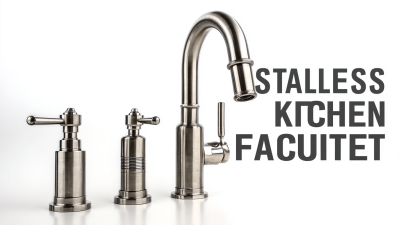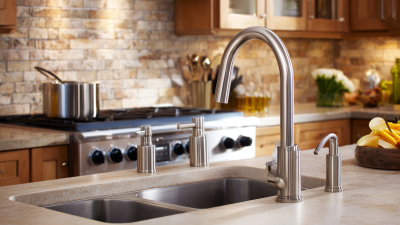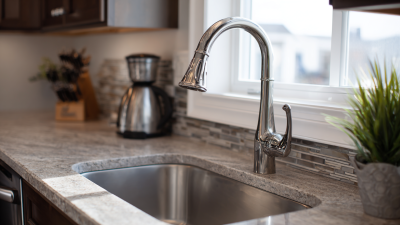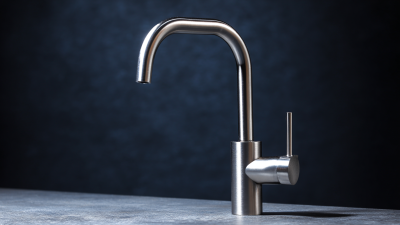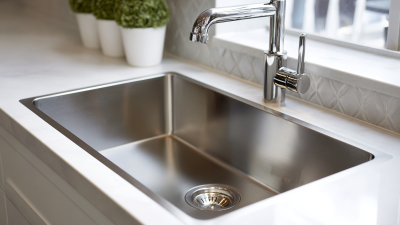When it comes to enhancing the aesthetics and functionality of your kitchen and bathroom, selecting the right fixtures is crucial. Among the various options available, the Stainless Steel Kitchen and Bathroom Faucet stands out for its durability, sleek design, and versatility. This guide aims to provide you with the ultimate insights and tips for choosing the perfect faucet that not only complements your décor but also meets your practical needs. From understanding the benefits of stainless steel material to exploring different styles and functionalities, we will cover all the essential factors to consider. Whether you are renovating your home or simply looking to upgrade your fixtures, this comprehensive guide will help you make an informed decision, ensuring that your Stainless Steel Kitchen and Bathroom Faucet is an excellent long-term investment for your space.
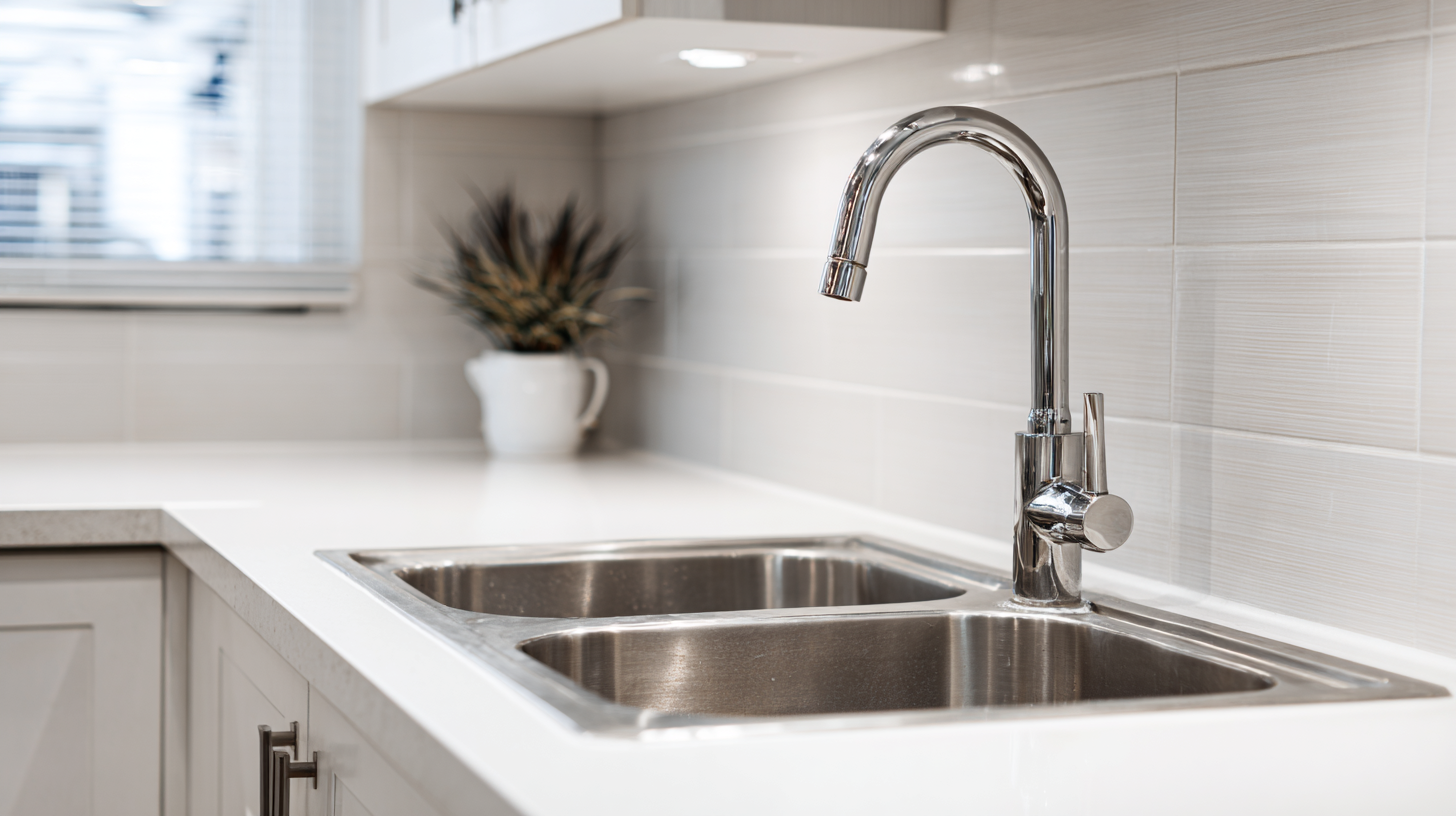
When choosing the perfect stainless steel faucets for your kitchen and bathroom, it's crucial to understand the different types available on the market. According to a report by the Kitchen & Bath Association, stainless steel is favored for its durability, resistance to corrosion, and modern aesthetic. There are primarily three types of stainless steel faucets: pull-down, pull-out, and single-handle faucets, each catering to different user preferences and needs.
Pull-down faucets, often equipped with a retractable spray head, offer increased functionality and flexibility, making them ideal for busy kitchens. Recent market analysis shows that pull-down designs have gained over 30% popularity among consumers in the past few years, largely due to their versatility and ease of use. On the other hand, pull-out faucets, while similar, are designed for precise rinsing and often come with a longer hose, providing an extended reach without compromising on style. In bathrooms, the emphasis shifts towards single-handle faucets, which provide efficient temperature control and space-saving designs, with 65% of homeowners preferring this type for its simplicity.
Understanding these distinctions can significantly enhance your selection process, ensuring that your faucet not only matches your design aesthetic but also meets your functional requirements. With continued advancements in faucet technology and design, selecting the right type of stainless steel faucet has never been more essential for creating a stylish and effective space.
This chart displays the different types of stainless steel faucets commonly used in kitchens and bathrooms, along with their popularity based on market trends.
When selecting a stainless steel faucet for your kitchen or bathroom, there are several key features to consider that can greatly impact functionality and aesthetics. First, look for a faucet with a corrosion-resistant surface. Stainless steel is an excellent choice, but ensure that it has a high-quality finish to prevent scratching and tarnishing, which can detract from its appearance over time. Additionally, consider the type of spout—either high-arc or pull-down option—depending on your space and the tasks you'll be performing.

Another essential feature is the ease of installation. Many modern faucets come with pre-assembled components and detailed instructions, making it simpler for DIY enthusiasts. Moreover, evaluate the water flow rate and handle type; options with a single lever provide greater convenience, while dual-handle designs offer precise temperature control. Finally, check for compatibility with water filtration systems if you plan to install one, ensuring your chosen faucet meets all your kitchen or bathroom needs seamlessly.
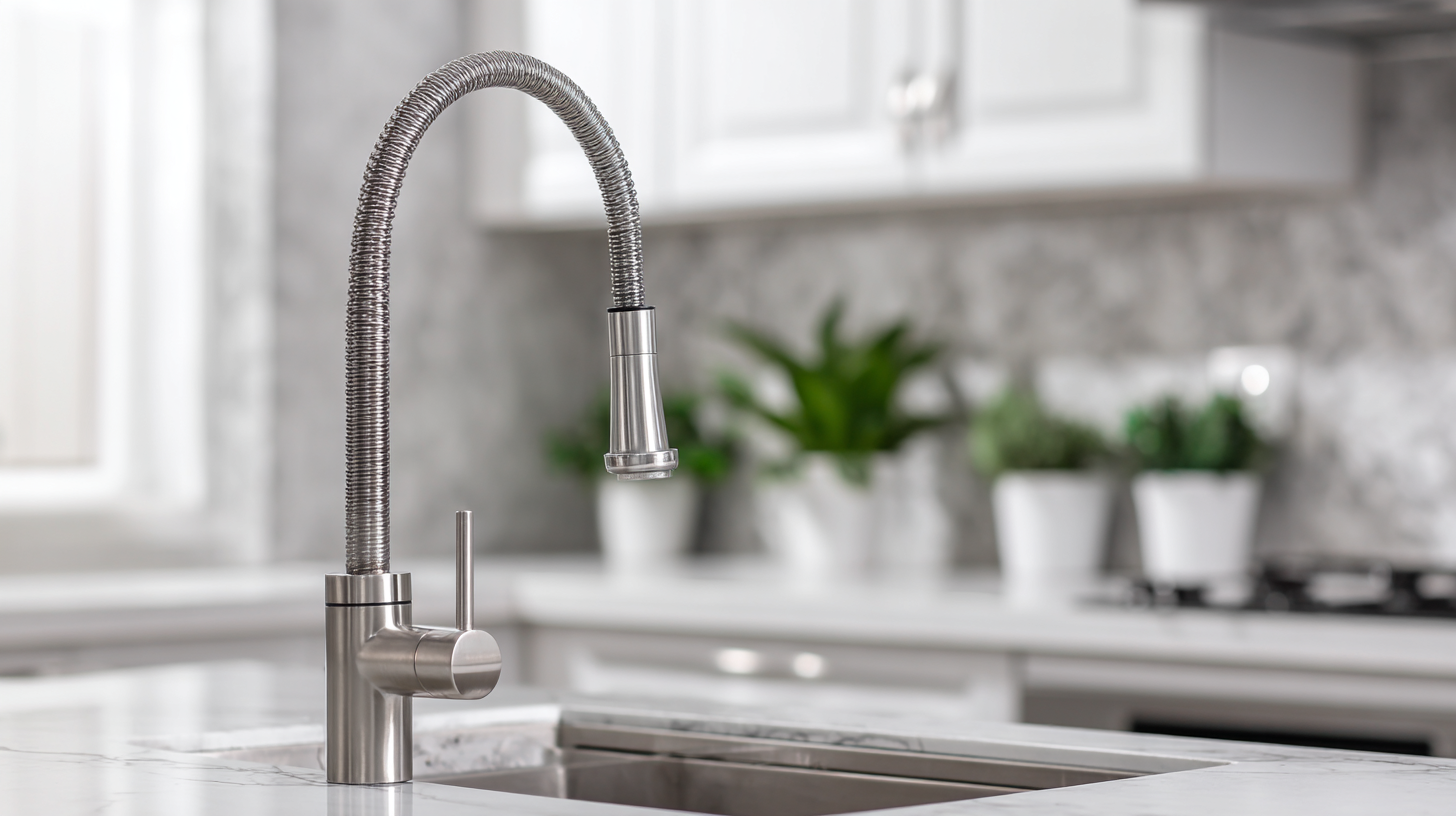 When designing your home, the finish and style of faucets can significantly impact the overall look and functionality of your kitchen and bathroom. Recent trends highlight the evolving role of faucets, transforming them into essential design elements rather than mere utilities. With consumers increasingly valuing both aesthetic appeal and functionality, the right finish can elevate the decor and ensure a cohesive design. Reports suggest that finishes like matte black and brushed nickel are gaining popularity, aligning with modern design preferences that favor sleek and minimalist solutions.
When designing your home, the finish and style of faucets can significantly impact the overall look and functionality of your kitchen and bathroom. Recent trends highlight the evolving role of faucets, transforming them into essential design elements rather than mere utilities. With consumers increasingly valuing both aesthetic appeal and functionality, the right finish can elevate the decor and ensure a cohesive design. Reports suggest that finishes like matte black and brushed nickel are gaining popularity, aligning with modern design preferences that favor sleek and minimalist solutions.
Tips: When selecting a faucet, consider the overall color palette of your space. Ensure that the faucet finish complements existing appliances and fixtures. For example, pairing a polished chrome faucet with stainless steel appliances creates a timeless look, while incorporating matte finishes adds a contemporary touch.
In addition to style, it's crucial to consider the faucet's functionality. Experts stress that features such as pull-down sprayers and touchless technology enhance user experience and ease daily tasks in the kitchen. As kitchen and bathroom designs continue to evolve, investing in high-quality, stylish faucets not only improves daily convenience but also enhances your home's value.
When it comes to selecting the perfect stainless steel kitchen and bathroom faucet, understanding your budget is crucial. Stainless steel faucets can vary significantly in price, often reflecting differences in quality, brand, and design. A common misconception is that higher prices guarantee better performance; however, there are many affordable options that combine style and functionality. By comparing various brands and models within your price range, you can discover high-quality faucets that meet your needs without overspending.
Additionally, it's important to consider the long-term value of your investment. While some faucets may be marketed at lower prices, they might lack durability or have a limited warranty, leading to higher replacement costs in the future. Look for faucets with solid construction, reputable warranties, and positive customer reviews. This will help ensure that you find a stainless steel faucet that balances quality and affordability, making it a worthwhile addition to your kitchen or bathroom.
Maintaining stainless steel faucets is crucial not only for aesthetics but also for longevity. Stainless steel is known for its corrosion resistance, yet it can still be susceptible to stains and water spots if not properly cared for. According to the National Association of Home Builders, nearly 80% of homeowners prefer stainless steel fixtures for their durability and modern look, making maintenance key to preserving their value.
**Tips for Caring for Your Stainless Steel Faucets:** To keep your faucets looking their best, regularly clean them with warm soapy water and a soft cloth. Avoid using abrasive cleaners or scouring pads, which can scratch the surface. For tougher stains, a mixture of vinegar and baking soda can effectively break down grime without damaging the finish. Additionally, the American Institute of Steel Construction suggests drying your faucets after each use to minimize water spots and prevent mineral buildup.
Another essential tip is to check the seals and water lines periodically for leaks. According to a report by the Environmental Protection Agency (EPA), even minor leaks can waste over 3,000 gallons of water per year. By ensuring that your faucets are well-maintained, you not only enhance their function but also contribute to water conservation efforts.
| Feature | Description | Tips for Maintenance |
|---|---|---|
| Durability | Stainless steel is resistant to rust, corrosion, and staining, making it ideal for kitchens and bathrooms. | Clean regularly with mild soap and water to maintain its finish and prevent water spots. |
| Design | Available in various styles and finishes to match your decor. | Choose finishes that are easy to clean and resistant to scratches. |
| Sustainability | Stainless steel faucets are often made from recycled materials and are fully recyclable. | Consider eco-friendly cleaning products to promote sustainability. |
| Water Flow Rate | The flow rate affects water usage; many modern faucets have a flow rate of 1.5 to 2.2 GPM. | Install aerators to conserve water without sacrificing performance. |
| Installation | Many faucets come with an easy installation process, often suited for DIY projects. | Follow manufacturers' instructions for proper installation to prevent leaks. |
